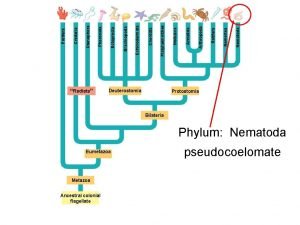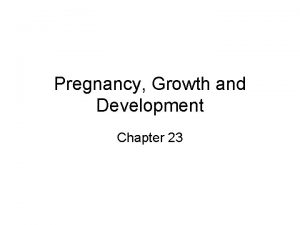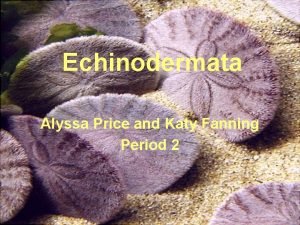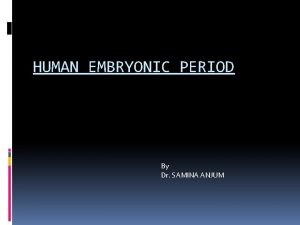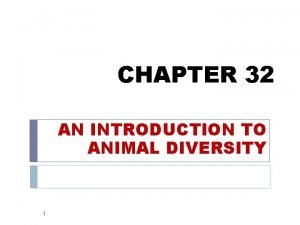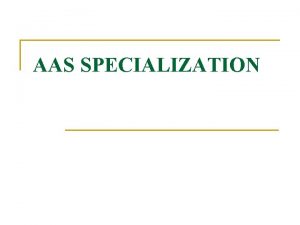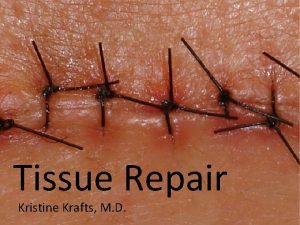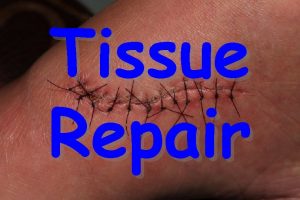Tissue Development Repair Germ Layers Specialization One of






- Slides: 6

Tissue Development & Repair

Germ Layers & Specialization One of first events upon fertilization is the creation of germ layers within the embryo (2 weeks): • Superficial – Ectoderm • Intermediate – Mesoderm • Deep – Endoderm These germ layers are composed of stem cells capable of specialization to create the tissue types for which the body organs are derived.

Specialization Stem cells multiply and take on the size, shape and arrangement during development to perform specific functions in the body. Specialization • Epithelial arises from all germ layers • Connective and muscle arises from the mesoderm • Nervous arises from the ectoderm

Developmental Aspects of Tissue · By 8 weeks all tissues (and organs) are formed, rapid growth occurs until birth. · Proliferation: the growth and creation of new cells / tissues of the human body. · Nerve and adipose tissue stop dividing while most other tissues grow and develop through adulthood. Blood and epithelial tissues regenerate continuously. • Most tissues will repair (regenerate) upon being damaged · Old age = decrease in mass (atrophy) & viabililty (low repro rate)

Tissue Repair A. Homeostasis · Blood clot walls off the injured area (scab) · Dense fibrous connective tissue (scar tissue) is produced to hold the wound together B. Inflammation • Immune system cells migrate to area of infection to limit infection • Swelling, redness and pain occur at wound site C. Proliferation (Repair) · Macrophage cells destroy damaged tissues while granulation tissue (new loose CT and microscopic blood vessels) is formed · Cell division (mitosis) leads to replacement by the same kind of cells tissue D. Remodeling • The repaired tissue remodels itself back to original state (or close to it)

Regeneration of Tissues · Tissues that regenerate easily - Epithelial tissues and bone - Fibrous connective tissue (scar tissue), Granulation tissue · Tissues that regenerate moderately to poorly - Skeletal and smooth muscle, cartilage, dense connective tissues · Tissues that are replaced largely with scar tissue (amitotic at maturity) - Cardiac muscle, Adipose - Nervous tissue within the brain and spinal cord

